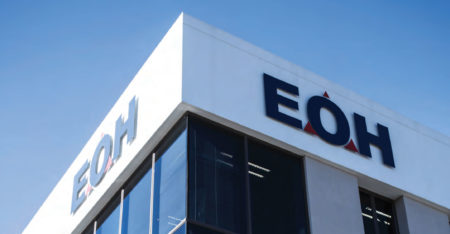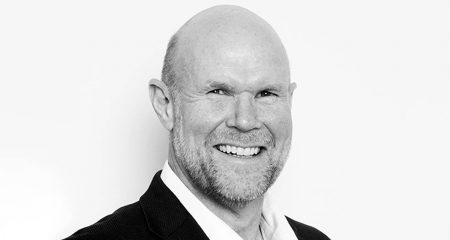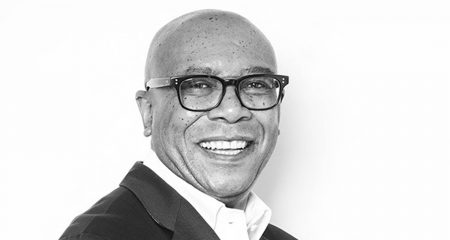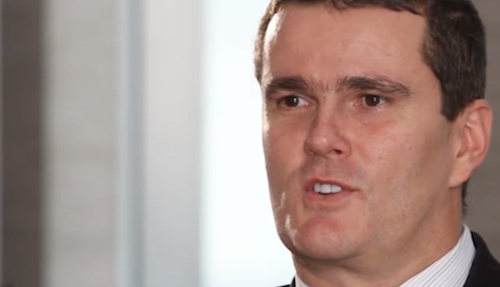
Want fibre to your home? You could soon have it. i3 Africa, a new company backed by the National Empowerment Fund, plans to build a high-speed fibre network connecting 2,5m homes within the next 4-5 years in a multibillion-rand project that could transform SA’s broadband landscape.
TechCentral can reveal exclusively that the new network, which is set to be built in six SA cities — Durban, Cape Town, Johannesburg, Port Elizabeth, Bloemfontein and Pretoria — will offer minimum connection speeds of 100Mbit/s to consumers and will be “competitively priced” next to Telkom’s fixed-line broadband digital subscriber lines (DSL). Speeds of up to 1Gbit/s will be available.
i3 Africa is headed by CEO Cornelis Groesbeek and chairman Andrew Mthembu, both of whom have years of experience in the telecommunications industry. Both men are nonexecutive directors on the board of Broadband Infraco. They have declared their plans to the company and don’t believe a conflict of interest exists as Infraco focuses exclusively on national long-distance and international connectivity.
i3 Africa has appointed Merrill Lynch as leader arranger for funding from capital providers for the project.
Groesbeek says the company will spend between R5bn and R6bn on the network — about a third of the cost normally associated with traditional fibre-to-the-home projects.
i3 Africa — its shareholders include the National Empowerment Fund (with 23% of the equity), Groesbeek, Mthembu, Martin Cele (former CEO of Durban business incubator SmartXchange) and Craig Carthy (an investment banker) — has chosen Durban as the first city that will get the infrastructure. It will build a pilot network north of Durban in the next few months to test the system before beginning a commercial roll-out from midyear.
The network will operate on “open-access principles”, meaning Internet service providers and broadcasters can sell services — broadband, video-on-demand and telephony — directly to consumers using the network. i3 Africa will provide infrastructure only. It will not sell services directly to consumers, leaving that to third-party service providers.
These providers will be able to buy access to the network through facilities such as Teraco’s data centres, where i3 Africa plans to establish points of presence.
Groesbeek says the network will be built using technology developed by the UK’s i3 Group. i3, which is expected to take a 15% stake in i3 Africa, has already deployed similar fibre networks in the US, the UK, Australia and New Zealand.
i3 Africa consists of two subsidiaries: H2O networks, which will build the physical network, and Fibre City, which will manage the infrastructure and billing systems on behalf of service providers.
Groesbeek claims i3 Africa will be able to build the network at a third to half of the cost normally associated with fibre deployments of this nature — and in a fraction of the time.
The company will do this by making extensive use of metropolitan sewerage and water networks, obviating the need for expensive civil works. It’s already in talks with the big metros about the project, and is on the verge of winning a contract to begin work in the Durban metro.
Sewerage pipes will be used mainly to build the metropolitan rings around the cities. Access to people’s homes will be provided through fibre laid in water pipes.
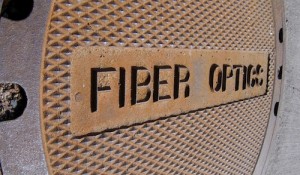
“We hop out of the sewer, as it were, and do an access ring around a suburban block using a technology called micro trenching,” Groesbeek explains. “This involves cutting a 50mm-wide and 200mm-deep slice in the road using a cutting head, which can be attached to the front of a construction tractor.”
He says each machine will cut, lay fibre and seal 1,5km of road a day at “20% of the cost of conventional trenching”.
From the micro trench, the company will use an i3-patented technology called Atlantis, which will feed the fibre through the water supply system into people’s homes.
“We cut the water pipe on the pavement, next to the water meter, attach a fitting which is certified to last 100 years. Then, just before the water valve in your house, we cut the pipe again and feed through the fibre,” Groesbeek says.
He estimates it will take about 30 minutes to complete the installation in each home.
i3 Africa has already deployed 100km of fibre in Durban on a test basis. In the next few months, homes and businesses in the suburb of Somerset Park, next to Umhlanga, will be used as a test bed for the technology. The pilot will involve about 100 premises — 80 private homes, 20 businesses, one community centre and three schools.
“This pilot will allow us to test and verify everything before we scale up to 2,5m premises over four to five years.”
The company also plans to connect 225 of the Ethekwini (Durban) municipality’s offices and public facilities. It hopes to work with other metros on similar projects.
i3 Africa has no intention of playing in the long-distance and submarine fibre market, which Groesbeek says is already adequately served by other companies and projects.
He says i3 Africa is already busy with site surveys and network design and is in talks with some of the bigger metros, including Johannesburg, about its plans. “We’ve decided to focus first on Durban, which has a history of being an early adopter of innovative technologies, but we are engaging with everyone.”
The Durban leg will consist of 2 500km of access fibre and another 7 500km to 10 000km of fibre into people’s homes and into business premises. “We will have all that done during 2012, and sometime next year we will start on the core network in a second city.”
Subsidiary Fibre Networks already has the necessary service and network licences it needs to operate the network, which it acquired from a shelf company.
Groesbeek cautions that the roll-out plans could change as construction gets underway and the project advances, but it has identified six cities in its business plan. “A lot is dependent on the reception we get from the municipalities and how quickly we work through the whole process.”
Asked whether he regards plans by the Independent Communications Authority to unbundle Telkom’s copper cable access network, allowing rival operators and Internet service providers access to this “last-mile” infrastructure, as a threat to i3’s plans, Groesbeek says copper can’t compete with fibre.
“If all consumers wanted was low-definition YouTube, then, yes, it would be a threat. But with our network you’ll be able to watch high-definition and 3D television and get video on demand. Our baseline planning reference is 100Mbit/s to the home.”
He says it’s too early to say how much consumers will be expected to pay for access to the system. But, he says, “we wouldn’t do it if it wasn’t going to be attractive to the market”. He expects service providers will offer a spread of products, including capped and uncapped broadband offerings, as well as triple-play options of television, broadband and voice telephony.
“It will be competitively priced next to DSL. It has to be.” — Duncan McLeod, TechCentral
- Subscribe to our free daily newsletter
- Follow us on Twitter or on Facebook


